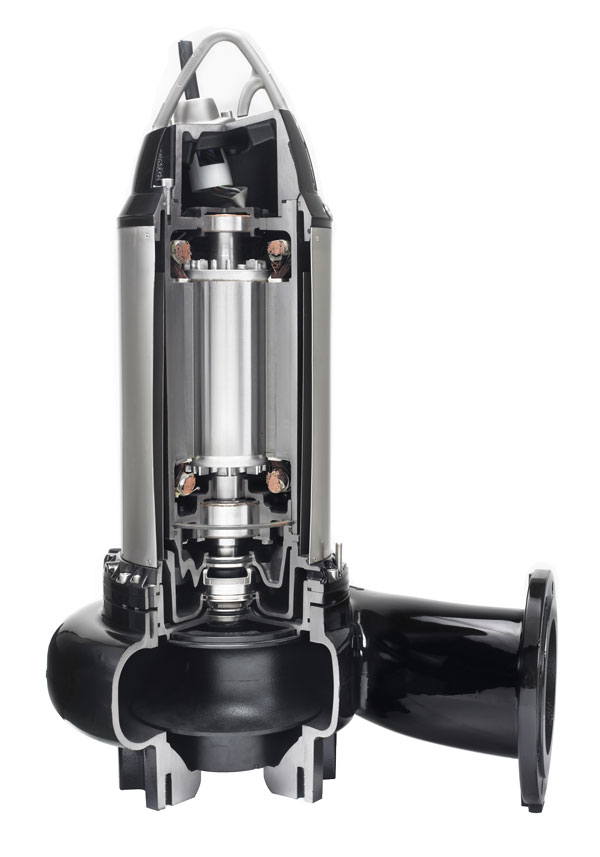While closed impellers have existed for decades, they have faced issues with vibration, clogging and inefficiency in wastewater applications. In recent years, however, engineers and manufacturers have worked to develop impeller technologies that address these common problems. One type of impeller allows a non-compromised, free spherical passage throughout the pump. The design improves pump efficiency over traditional channel impellers by as much as 20 percent. This specific impeller design also tackles the problem of vibration. With a multi-vane impeller, fluid and pressure are more evenly distributed around the complete circumference of the impeller, whereas the pressure distribution is asymmetrical around a single-channel impeller. The traditional and well-known single-channel impeller has the strong advantage of offering high hydraulic efficiency, but it can pose potential problems with vibration.
 Image 1. This technology includes a free spherical passage throughout the pump. (Courtesy of Grundfos)
Image 1. This technology includes a free spherical passage throughout the pump. (Courtesy of Grundfos)
